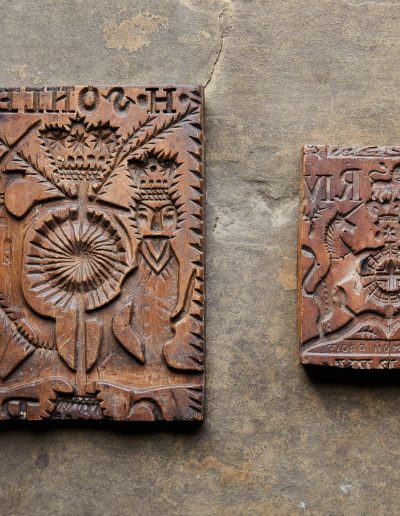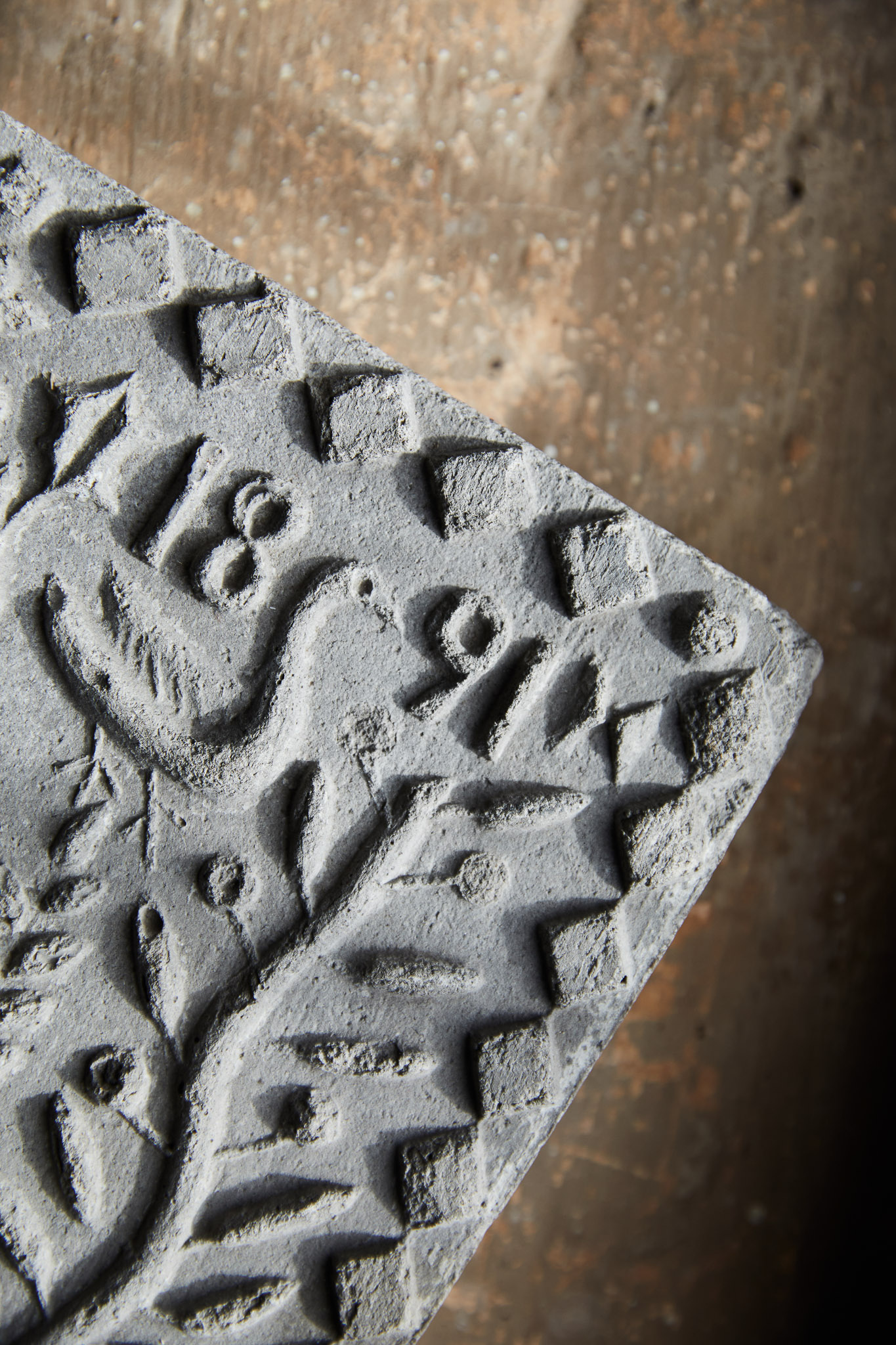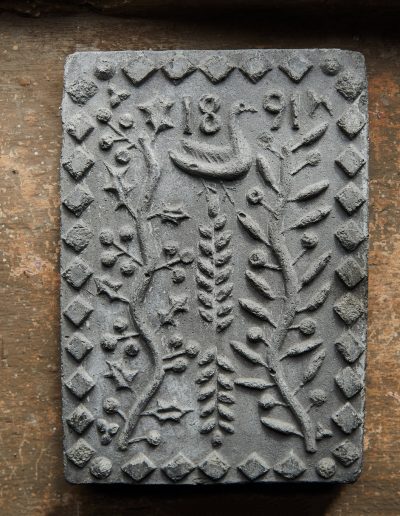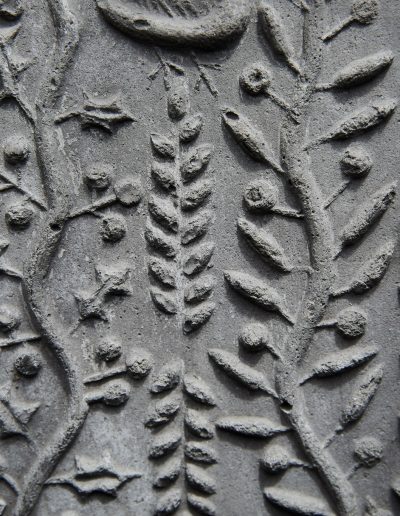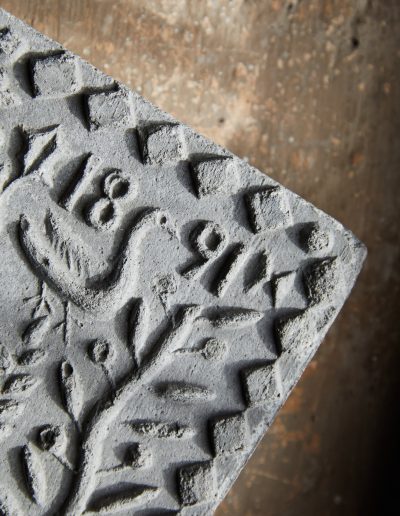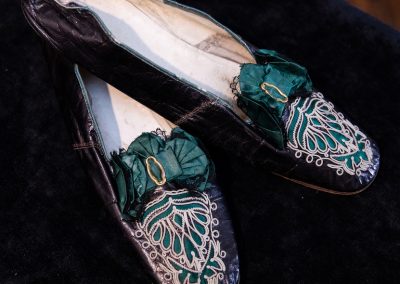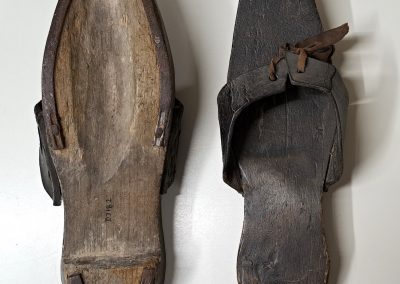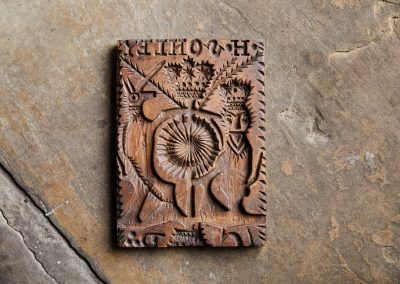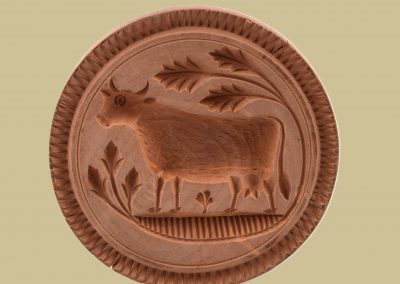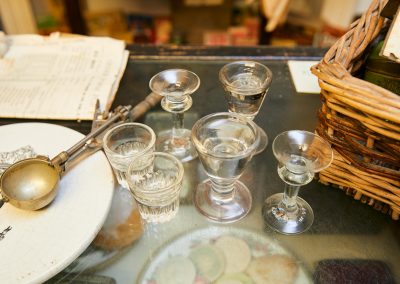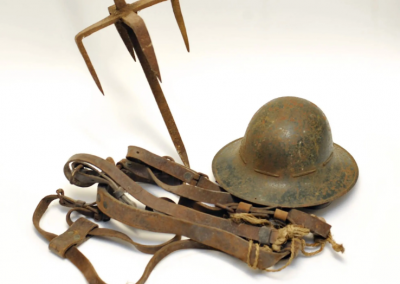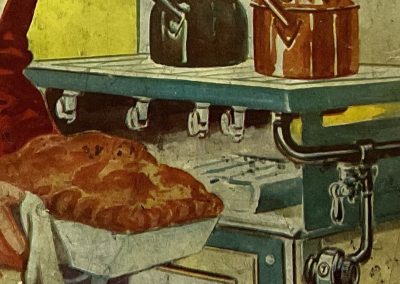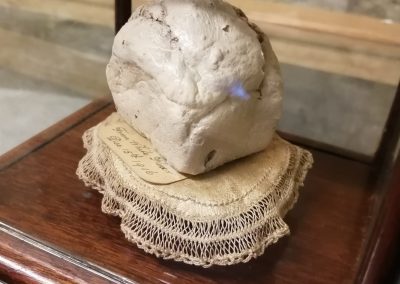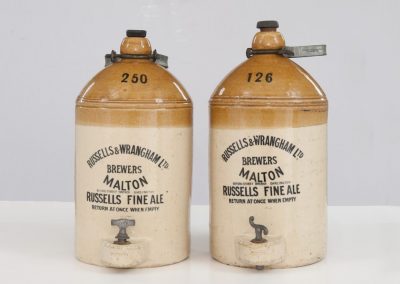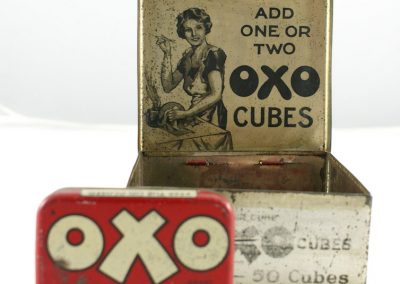A selection of Gingerbread Moulds
Ryedale Folk Museum
Gingerbread started life as a luxurious treat. New mums were given gingerbread to help them recuperate from childbirth and it was also served in celebration at weddings and at Christmas. This is because the exotic ingredients would have been very expensive.
These moulds are from Sonley’s bakery in Kirkbymoorside on the edge of the North York Moors. The wooden moulds date from the reign of King George IV (1820 – 1830) and are decorated with the royal coat of arms, including the lion and unicorn design.
The motto of the British monarch is included: Dieu et mon droit – God and my right, written in French and believed to be a reference to the divine right of kings to govern. French was the language spoken in the royal court for centuries. On the back of the larger mould is another version of the carving which the craftsman has abandoned. We can only imagine the distress of the carver upon discovering an error!
A glimpse of a festive Victorian gingerbread
Ryedale Folk Museum’s collection also contains concrete casts that have been made using a gingerbread mould from the same bakery but during the late Victorian period.
They are decorated with natural imagery, possibly yew branches, holly and berries suggesting this was a mould used for Christmas, and diamond shapes. The ears of wheat down the centre are perhaps as a symbol of the baker.
The moulds themselves do not survive, but somebody had taken the trouble to make the casts, thereby preserving the gingerbread design.
A treat with a long history
Gingerbreads were first created during medieval times, with records dating from the 14th century. Shakespeare mentioned them in ‘Love’s Labours Lost’ in the quote: ‘An I had but one penny in the world, thou should’st have it for a gingerbread.’
Surprisingly, this treat has never been a bread – it gets its name from the Old French gingerbras meaning preserved ginger.
Original recipes would have produced a denser, less brittle biscuit than the one we eat today, Modern biscuits would snap when used in moulds of this size.
Watch the video to explore the design features and process of creating the Georgian moulds.
Watch The Video With Subtitles
Activity – create your own gingerbread design
Worksheet
Talking Points
What shapes do we associate with gingerbread now? What shapes have you made or seen?
Why do you think the motto is in French? Do you know what it means? Do you think we should update the motto of the British monarch?
Why do you think the date on the cast from 1891 isn’t backwards?
What decorations can you spot on the concrete cast – what time of year do you think this might have been used?
Which is your favourite design?
Do you like gingerbread? When do you normally eat it?
Do you know of any local specialities of food from your region?
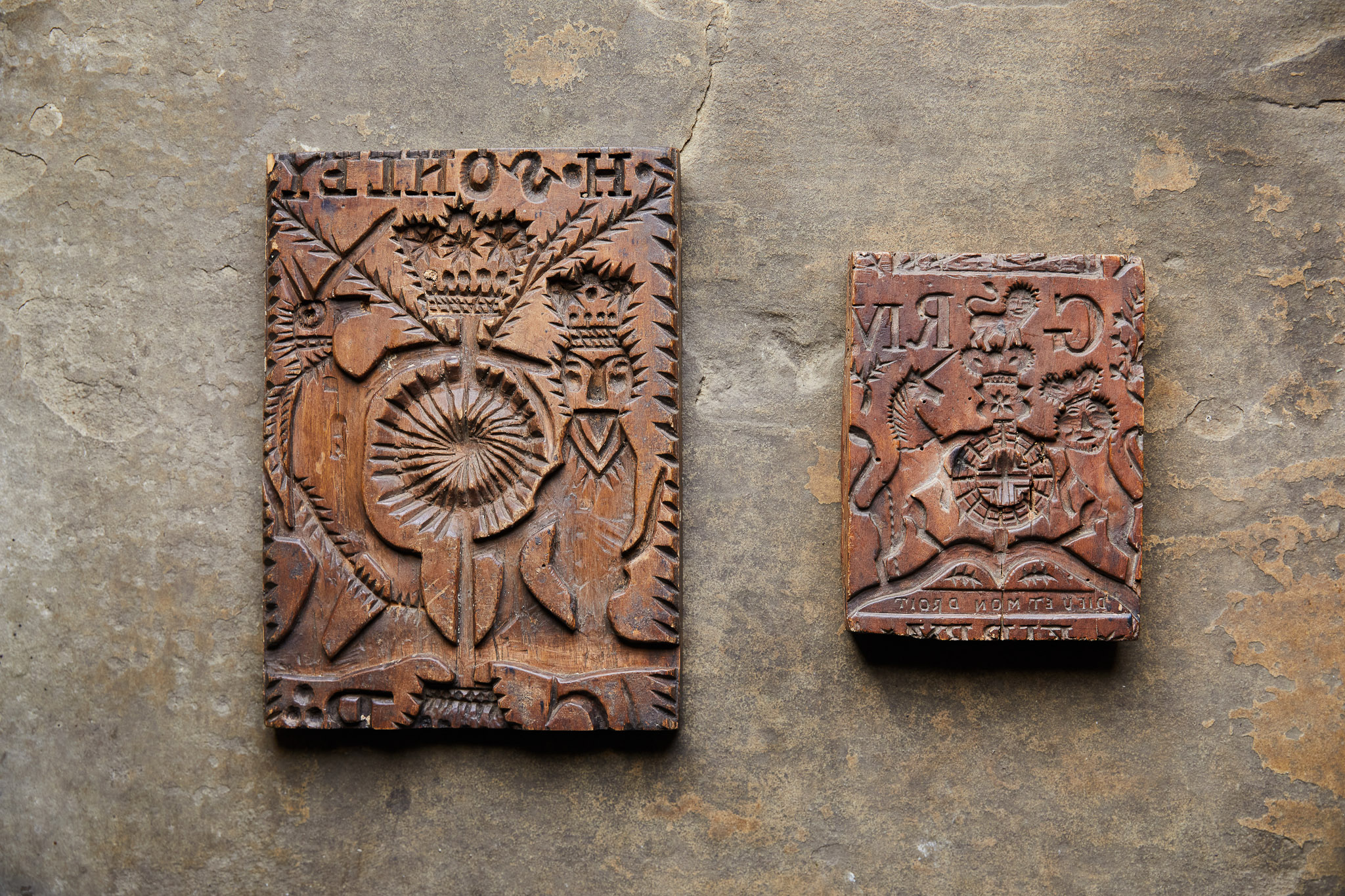
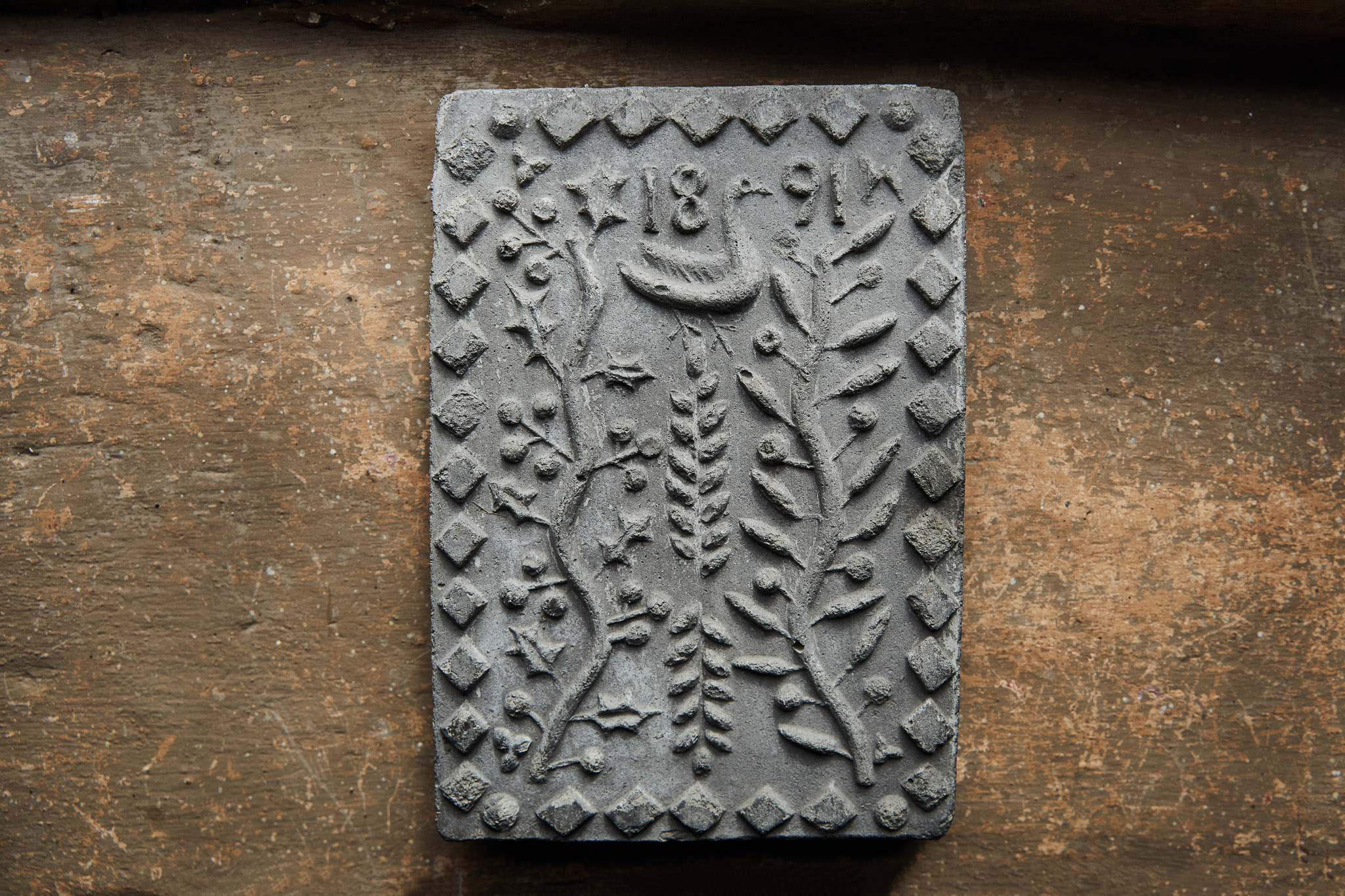
In the Classroom
Hotseat
Interview a student in role as the carpenter who made a mistake with his carving. How do you think he must have felt?
Design
Create your own design for a gingerbread mould with the activity above.
Try writing your design backwards. The gingerbread mixture would be pressed into the mould so that the writing appeared the right way round when the gingerbread was taken off it.
Hold a Debate
Introduce the debate motion: this gingerbread mould was created by a skilled craftsman. You can read tips for formalising your debate.
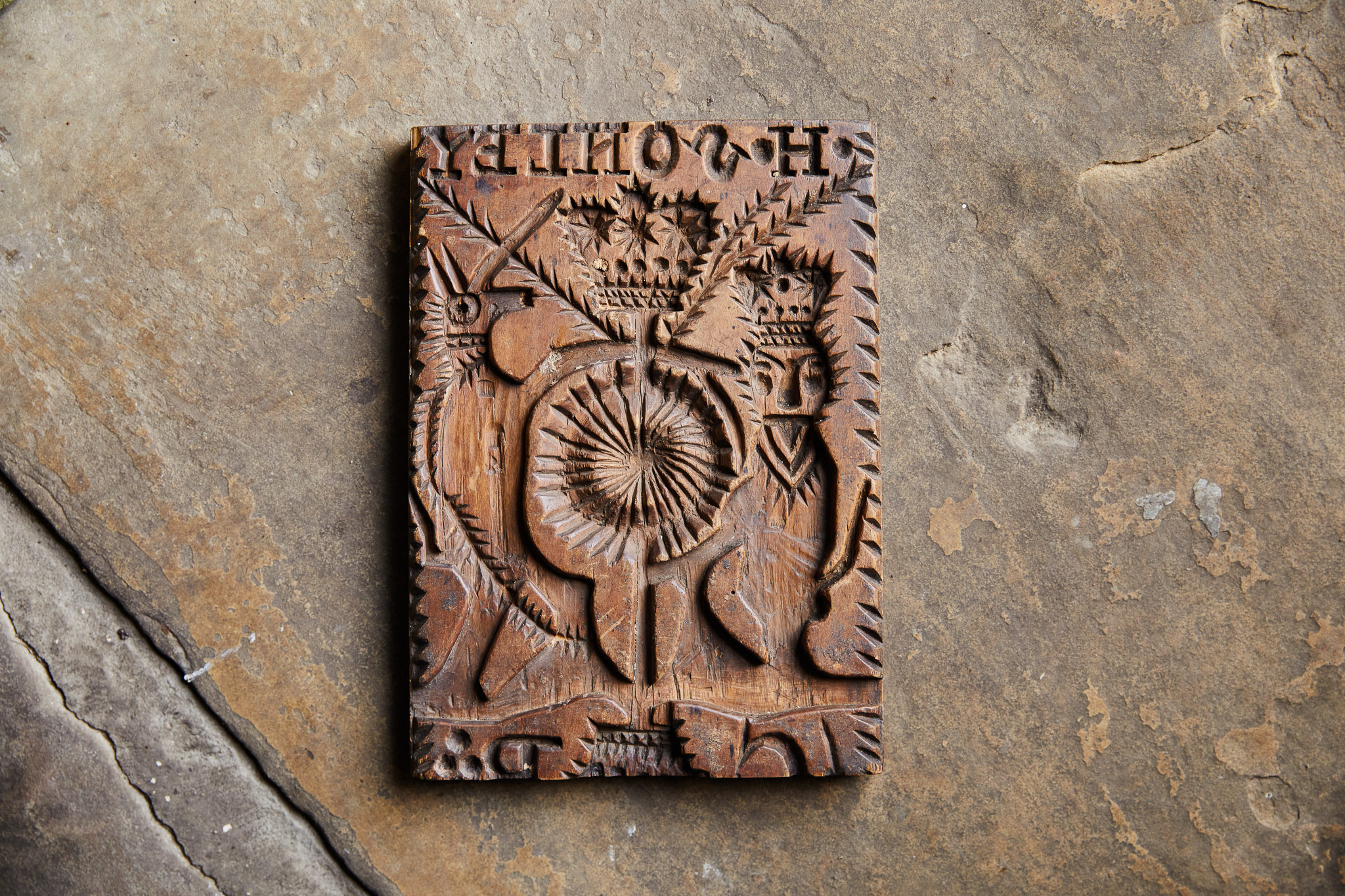
Hands on History
You can find more incredible social history objects to learn about the people of the past in museums across North Yorkshire.
Find you nearest one, or visit Ryedale Folk Museum to see objects displayed across 20 heritage buildings in the North York Moors National Park.
Museum Location
Find more food-related objects

